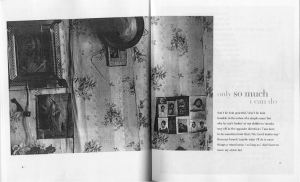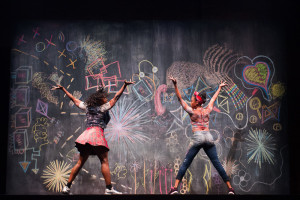“It is not enough to reunite with the people in a past where they no longer exist. We must rather reunite with them in their recent counter move which will suddenly call everything into question; we must focus on that zone of hidden fluctuation where the people can be found. For let there be no mistake, it is here that their souls are crystallized and their perception and respiration transfigured… When the colonized intellectual writing for his people uses the past he must do so with the intention of opening up the future, of spurring them into action and fostering hope.”
Frantz Fanon The Wretched of the Earth (163- 167).
In On National Culture, Fanon highlights the tendency of the “colonized intellectual” to look to the past “in order to escape the supremacy of white culture,” (155). In highlighting this truth, looking to the past becomes understood as a wanting practice. Fanon suggests a larger amount of energies be spent using the past as an aide in centering the present moment where the people become woke, where they define themselves, where their agency molds the future.
Reading this quote makes me think heavily about Harlem and healing. Why I think of Harlem, always, within landscapes of time— Harlem in the future, Harlem as I know it today, and, especially, Harlem in the past—is a reflection of one of the ways I’ve chosen to “escape the supremacy of white culture,” or, rather, one of the ways I’ve chosen to heal. For this reason, reshaping Fanon’s words to communicate the necessity of remembering the past, finding solace in history was most pressing. However, I wanted to do this in a way that recognized the value of centralizing the current experiences of the people and propelling them into action, as Fanon encourages, while placing emphasis on the relationship between remembering to heal and remembering to incite action.
Spaces are where I hear changes in the voice of the speaker; (double) slashes highlight words and connecting phrases; dashes that engulf words are meant to create a level of erasure.
it is –not- enuf/
to -re-unite with the people/
in a past/ where they no longer exist
we/ must -rather re-unite with them
in their recent counter move/
which will suddenly call everything into question/
we must focus on that zone/ of hidden fluctuation//
where the people can be found/
for let there be no mistake/
it is here that their soulz are crystallized & their perception n respiration transfigurd//
when the colonizd intellectual writin
for his people
uses the past he /must/ do so with the intention of openin up the future/
of spurring them inta action & fosterin hope.
*I listened to a lot of beats while going through this week’s reading and while writing this post. Here are a few.
Edit/Update: A link to a definition of “woke/stay woke” has been added. I also encourage everyone to listen to Erykah Badu’s Master Teacher and to check out staywoke.us




